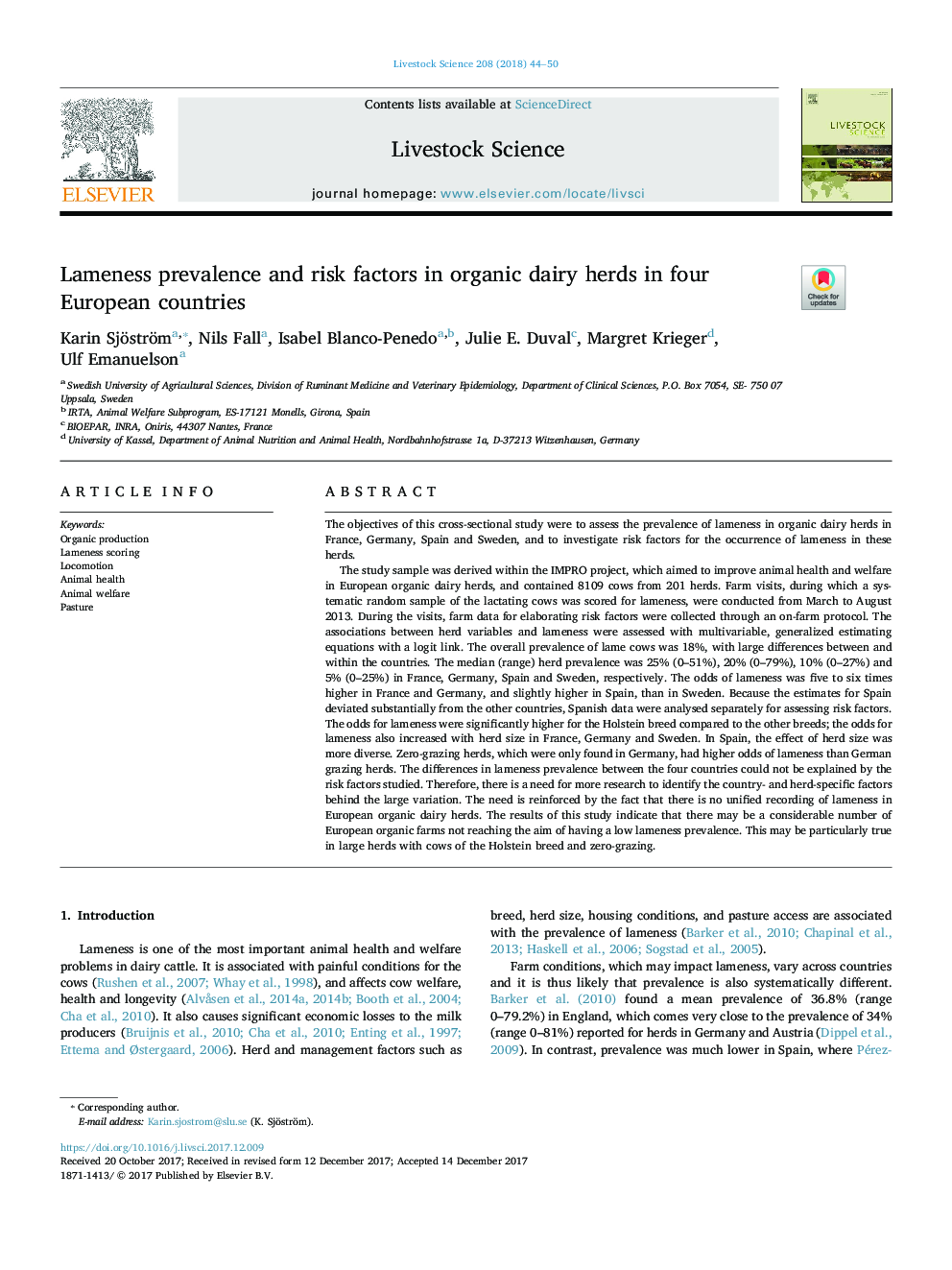| کد مقاله | کد نشریه | سال انتشار | مقاله انگلیسی | نسخه تمام متن |
|---|---|---|---|---|
| 8502051 | 1553924 | 2018 | 7 صفحه PDF | دانلود رایگان |
عنوان انگلیسی مقاله ISI
Lameness prevalence and risk factors in organic dairy herds in four European countries
ترجمه فارسی عنوان
شیوع و عوامل خطر در گله های لبنی آلی در چهار کشور اروپایی
دانلود مقاله + سفارش ترجمه
دانلود مقاله ISI انگلیسی
رایگان برای ایرانیان
کلمات کلیدی
تولید آلی، نمره دادن لنینی، حرکت بهداشت دام، رفاه حیوانات، مرغ،
موضوعات مرتبط
علوم زیستی و بیوفناوری
علوم کشاورزی و بیولوژیک
علوم دامی و جانورشناسی
چکیده انگلیسی
The study sample was derived within the IMPRO project, which aimed to improve animal health and welfare in European organic dairy herds, and contained 8109 cows from 201 herds. Farm visits, during which a systematic random sample of the lactating cows was scored for lameness, were conducted from March to August 2013. During the visits, farm data for elaborating risk factors were collected through an on-farm protocol. The associations between herd variables and lameness were assessed with multivariable, generalized estimating equations with a logit link. The overall prevalence of lame cows was 18%, with large differences between and within the countries. The median (range) herd prevalence was 25% (0-51%), 20% (0-79%), 10% (0-27%) and 5% (0-25%) in France, Germany, Spain and Sweden, respectively. The odds of lameness was five to six times higher in France and Germany, and slightly higher in Spain, than in Sweden. Because the estimates for Spain deviated substantially from the other countries, Spanish data were analysed separately for assessing risk factors. The odds for lameness were significantly higher for the Holstein breed compared to the other breeds; the odds for lameness also increased with herd size in France, Germany and Sweden. In Spain, the effect of herd size was more diverse. Zero-grazing herds, which were only found in Germany, had higher odds of lameness than German grazing herds. The differences in lameness prevalence between the four countries could not be explained by the risk factors studied. Therefore, there is a need for more research to identify the country- and herd-specific factors behind the large variation. The need is reinforced by the fact that there is no unified recording of lameness in European organic dairy herds. The results of this study indicate that there may be a considerable number of European organic farms not reaching the aim of having a low lameness prevalence. This may be particularly true in large herds with cows of the Holstein breed and zero-grazing.
ناشر
Database: Elsevier - ScienceDirect (ساینس دایرکت)
Journal: Livestock Science - Volume 208, February 2018, Pages 44-50
Journal: Livestock Science - Volume 208, February 2018, Pages 44-50
نویسندگان
Karin Sjöström, Nils Fall, Isabel Blanco-Penedo, Julie E. Duval, Margret Krieger, Ulf Emanuelson,
